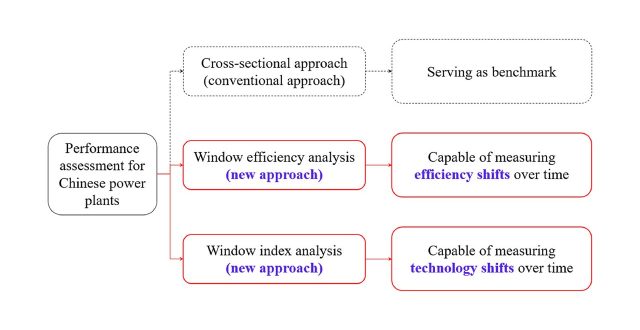To our knowledge, the previous studies did not answer the following question: how much does window analysis differ from the original Data Envelopment Analysis approaches and how to develop window analysis? To address these questions, we propose three intermediate approaches (cross-sectional, window efficiency and window index) and statistically compare them from their performances. The underlying concern is that we need to examine whether a metrological bias exists in our study. The concern is important in guiding policy issues such as energy policy and climate change. Empirically, the proposed approaches are applied to measure the unified efficiency of fossil fuel power plants in China from 2007 to 2017, since these plants are important energy consumers and CO2 emitters. We obtain two important implications. First, considerable differences are confirmed among the three approaches, thus implying an existence of the methodological bias. Second, Beijing (the capital of China) outperformed the other provinces in terms of their measures, since the Chinese government has paid serious attention to air pollution emitted from fossil fuel power plants. The governmental regulation in Beijing is a good example for pollution prevention in China. It is expected that the success on Beijing will be disseminated to the other provinces.

【Available online】Evaluating the performance of Chinese fossil fuel power plants by data environment analysis: An application of three intermediate approaches in a time horizon
WRHI Newsおすすめ
Available online
(School of Environment and Society / Dr. Toshiyuki Sueyoshi)
”Evaluating the performance of Chinese fossil fuel power plants by data environment analysis: An application of three intermediate approaches in a time horizon”
Journal of Cleaner Production(DOI: 10.1016/j.jclepro.2020.121992)
For details, click here
<Abstract>
